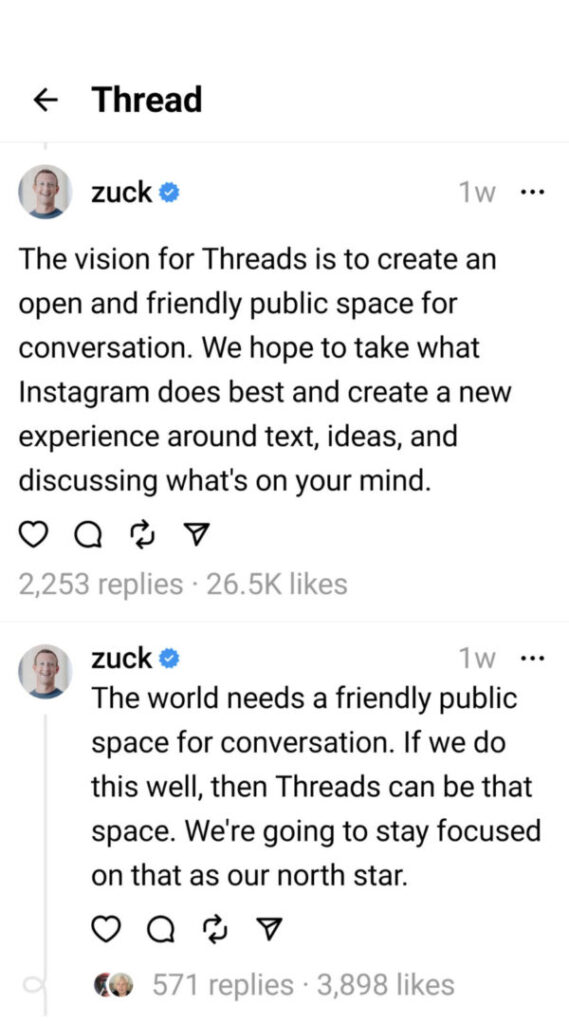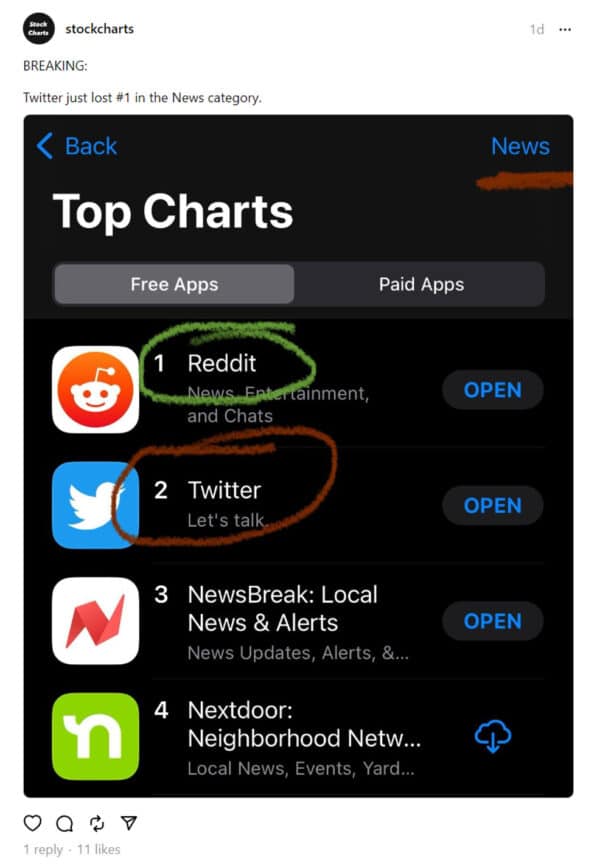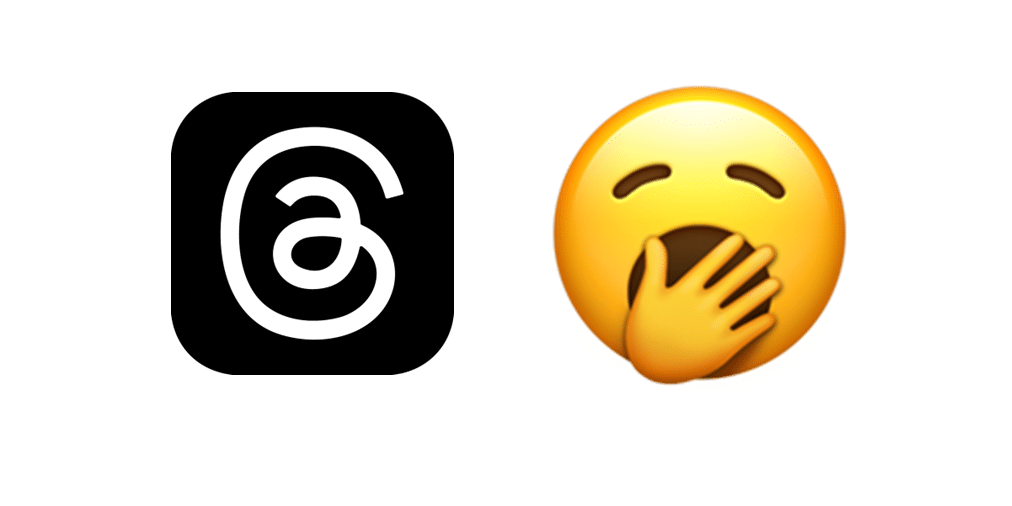
Ho-hum and hmm: Threads seems like a pale imitation of Twitter
“All we really need is 250 words,” Jody Lowe said when she suggested a quick, simple blog post acknowledging the launch last week of Threads.
Right. Someday I will write a 250-word blog post, you have my word. But on the subject of the so-called “Twitter killer” app—whose user base rocketed from 0 on July 6 to more than 100 million in seven days, there’s too much to say.
As someone who three months ago wrote a nostalgic post about Twitter, my thoughts on Threads are (to borrow a term made popular by Mark Zuckerberg) complicated and (my word) messy.
If you happened to be on vacation or otherwise occupied last week, here’s the modest description of Threads in the official announcement: “Threads is a new app, built by the Instagram team, for sharing text updates and joining public conversations. Our vision with Threads is to take what Instagram does best and expand that to text, creating a positive and creative space to express your ideas.” Also see Zuckerberg’s welcome post at right, stressing the world’s need for “a friendly public space for conversation.”
Unlike most social networks when launching, Threads is making no promises to break new ground. That’s fine with early Threads users, almost all of whom say they’re migrating in search of an environment free of the hate speech and harassment that is taking over Twitter.
This comment from a random Twitter user (@modestproposal1) sums it up:
“It seems to me that (most) aren’t seeking to gain incremental social capital by moving to Threads, which would arguably doom the undertaking. They just want to play the game they know and love/hate.”
If you’ve been a loyal Twitter user, the promise of a Threads account is to regain what Twitter once offered. Indeed, in its first week, there’s been a giddiness to some of the posts. “This is where the party’s at,” said one post. “It’s all about vibes,” wrote someone else. Some of it may have been forced, as in this comment from @fortunemag: “our boss told us to participate in this so here we are.” A comment liked by almost 30,000 accounts and replied to by almost 10,000!
Based on the platform’s first week, I’m not convinced that Threads was created with the intention of serving as a sanctuary and providing continuity for disenchanted Twitter users. It looks a lot like Twitter but offers none of the full functionality. There are no lists, no embeds, no hashtags, no trending topics, no suggested followers, no substacks. The lack of trending topics—which Twitter users have come to consider highly manipulated especially since Elon Musk took over—is intentional, but other features, including advertising, are yet to come.
Also, the posts can be read on the Threads app only. (I link to a few in this post, and on a desktop you can click on those links to read the post, but that’s the end of it, you can’t navigate anywhere else.)
Limitations are to be expected in a new social network. Even Twitter needed a few months to make its API available, but when it did, that fostered all kinds of exciting innovation and ways to interact with and follow the tweets.
Twitter and the rest of the social media masters have since gotten wise and we are not going back to that kind of heady, open social sharing. How it works today: you accept a social network’s invitation to join, create content and form relationships there, and the network will control everything else.
Eyes wide open
Meta is providing a new place where we can presumably resume our happy pre-Musk ways. But let’s go in with eyes wide open.
Individual users need to be attentive to privacy issues that Meta has previously played fast and loose with. As with other Meta apps, according to this Search Engine Land post, the vast amount of information Threads will collect includes: health and fitness, financial, location, browsing history, search history, home address, email address, phone number, cameras, photos, IP information, type of device being used, device signals, data on how users interact with posts and who they’re following. This aggressive data collection is at odds with the European Union’s Digital Markets Act, and explains why Threads isn’t available in the EU.
Investment firms, like all other businesses that have more to do than juggle multiple social media presences, are well advised to pace themselves. My bias is always in favor of prioritizing building out your own web presence over which you have full control and can benefit from user engagement, as opposed to chasing one more social network.
What follows are a few comments and observations after a week of ho-hum scrolling and tracking others’ reactions:
- Follow the Lowe Group on Threads. Of course, the Lowe Group has an account, why wouldn’t we? Threads’ major appeal is how simple it is to use Instagram credentials to set up an account. After a few months of study and consideration, we launched our Instagram account last month (see post)—and with a blink of an eye and zero strategic thought, we turned on our Threads account. Like millions of others have done, if only to head off account squatting.
- The rapid adoption is a credit to the Instagram brand. Time will tell how engaged these accounts will be. Will followers gained by sharing images on Instagram be equally captivated by the gray of Threads? “Use emojis in your posts. Being a text-based app, the colors in the emojis help your posts stand out,” was one thin suggestion from a Threads poster over the weekend. Hmm.
- I wouldn’t look for posts from investment firms and most financial advisors for a while. Threads is yet another social network that will have to be approved by Compliance, with posts to be archived. This shouldn’t be too high a hurdle, considering that Instagram activity can be archived. I’ve taken a look at some of the leading archivers’ websites and don’t see a peep about Threads, likely they were as surprised as the rest of us.
- Which is not to suggest that you won’t see investment firms’ Threads accounts. Back in the day when firms were planning their Twitter strategies it was common to see what looked like a bona fide investment firm Twitter account marked private. It was just until they could pull everything together.
- That’s what you’ll see today on the Threads accounts of Franklin Templeton and American Century Investments, for example. The Russell Investments and Fidelity accounts seem to be closer to go. Note Fidelity’s followers, by the way—a not at all shabby 6,232 on Threads. Compare to its 107,000 followers on Instagram and 357,400 on Twitter.
- Instagram profile photos, bios, followers all can be imported, and this is creating a bit of a disconnect. On Twitter, the advisors I follow have business-appropriate photos. Intentionally or not, those who hustled to use their Instagram account to quickly create a Threads account are now showing their softer side, including families and pets in their photos. Some commentators believe that it’s this integration between the two platforms that will help keep Threads posters on better behavior.
- The following/follower process is curious. Most newer social networks have more sophisticated algorithms than Twitter. Meta has proven itself deft at sending me an ever more pure mix of investment and puppy posts on Instagram, reflecting my usage. I just assumed the algo would have kicked in when I created an account using the same handle as my Twitter account (@RockTheBoatMktg) and I followed only investment-focused accounts and read only posts from them. That should have been sufficient to cultivate an investment-focused feed and to surface accounts of whoever else is out there. But no, the posts I saw for the first few days were heavy rotation @wizkhalifa and other celebrities and brands.
On Twitter, lists enable users to create their own little world even as the rest of the social network is turning into a dumpster fire. Meta seems intent on driving everything we see, and I don’t go for that. As of today, the Threads feed can’t be sorted by chronological order.
Two examples I’ve stumbled onto to challenge the consensus that it’s all sweetness and light on Threads while only ugliness remains on Twitter.
- Just read the vicious replies to the Threads account of Ellen DeGeneres, one of the celebrities recruited to be there waiting for the flood of joiners. And, since Threads is supposed to be bot-free, these are from humans?
- Kyla Scanlon is a very popular 20-something posting economic commentary on Twitter, Instagram, TikTok and now Threads. She’s the cover story of the current Fast Company, and she took to Twitter Monday to thank people for their support. Fintwit responded with a lovely parade of comments back to her. Made me puddle up, even.
At a time when TikTok has already supplanted Twitter as the “internet’s new town square,” is a Twitter replacement even necessary? A Washington Post article last week advanced this question, opining that Twitter has become culturally less relevant and is no longer the default platform for disseminating breaking news.
For the investment industry, such a conclusion is less actionable. BlackRock, Fidelity and Global X along with many financial advisors are among those offering investment insights on TikTok while concerns over the security of data make the platform dead on arrival at some firms. And, there’s always the threat that the federal government will ban it, as the state of Montana has.
Oh and don’t overlook Reddit as a news contender. Twitter has surrendered #1 in the Apple free news apps category, as StockCharts posted to Threads Tuesday.
Will the news industry embrace Threads?
The post below over the weekend asked an essential question about Threads’ aspirations.
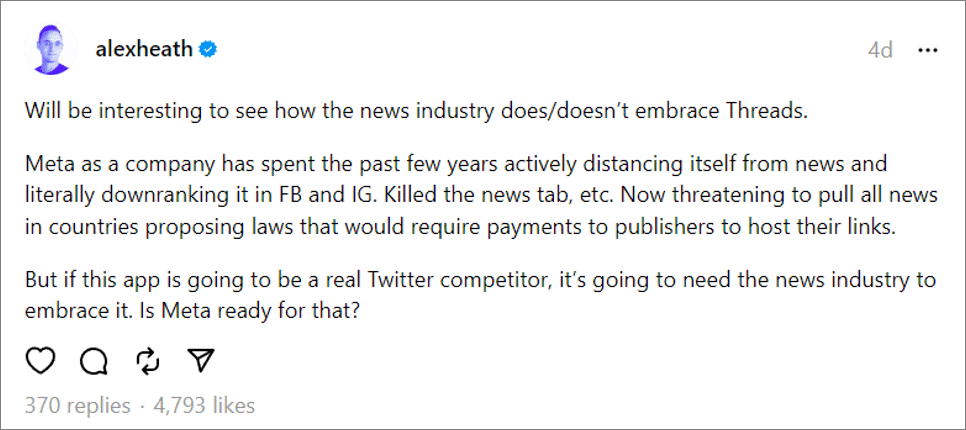
But those of us hoping that Threads could function as Twitter had may be out of step. Threads may not want to be a source of news, according to a response to that post by Adam Mosseri, who oversees Instagram and Threads.
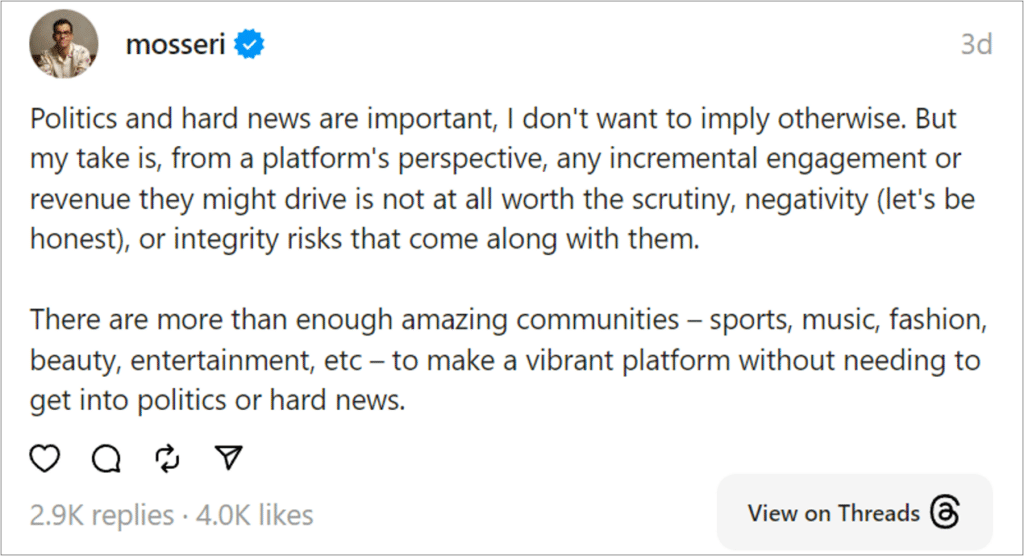
OK, this quote is enough to give us pause. Whether you were positioning yourself as a thought leader or your firm as relevant and with something to contribute, one reason to tweet was to raise your visibility in the hope of catching the attention of media. In fact, several investment publications and Morningstar have now established accounts on Threads. But, this comment begs the question to what extent they’ll be used.
Another major difference between established Twitter and the new Threads: as of now, Threads posts are not being indexed by Google and Bing. When tweets began to be indexed, it provided a major boost to visibility. You or your firm could have been discovered via your tweets by a Google searcher not even active on Twitter. Not to tease, but some asset manager tweets performed better in search than their websites. It’s unknown at this time when or if Threads posts wll be indexed. Instagram posts are not.
For now, the rush to Threads has all the makings of a rebound relationship to me. It’s too soon to know if Threads meets the yearning for something new, fresh and more life-affirming.
In forcing myself to repeatedly check in on the app over the last few days, its specific allure was lost on me. The most interesting thing I’ve seen so far on Threads was a post about a Financial Times article about what Ryan Reynolds is doing on LinkedIn.
What do you think? Post a comment or drop us a note.
Lowe Group offers a range of services related to digital marketing, send us a note for more information.
Subscribe.
Receive the latest news and insights from Lowe Group.
